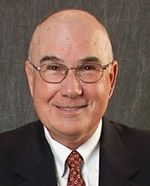Dental Implants: Spare Parts, Small Miracles

In spite of the tremendous reduction in dental cavities in the past 20 years, a missing tooth or teeth remain a problem in the adult population. The sheer numbers of tooth loss in people over 35 indicate many of us could benefit from dental implants.
Tooth implants have been part of many dentist practices for over 20 years. The success rate has been, and continues to be, over 95 percent.
Many people are now considering using implants to replace one tooth, or all their missing teeth. Many adults with missing teeth have partial or complete dentures and bridges, and they work fine.
However, conventional prostheses may not do for everyone - the patient may have trouble with a removable denture or is otherwise unable to chew. These are the very people who could stand to benefit most from as a few as two teeth implants.
How does the dental implant procedure work?
A root-form tooth implant is inserted into the upper or lower jawbone. After a healing period of a few months, posts are attached to each implant. Then a fixed bridge or overdenture is placed - the business end of the implant. Only the tooth part is visible.
For certain people, a single tooth replacement to bridge a gap is called for. Another patient might want to stabilize a lower denture.
The procedure is no more uncomfortable to the patient than a simple tooth extraction.
The success of the new dental implants is due to osseointegration, the meshing of implant and bone. The properties of the implant are such that a chemical and mechanical bond is formed. The jawbone actually grows into the implant. This contributes to the stability and comfort of the implant - and a patient rediscovering the joys of steak and fresh apples.
Give your dental implant dentist a call. Or find one using our search form above. Tooth implants might work for you.

+Jim Du Molin is a leading Internet search expert helping individuals and families connect with the right dentist in their area. Visit his author page.
Implant Dentistry Gives You Better Fitting Denture Implants

The art and science of implant dentistry has advanced rapidly during recent years and new techniques and materials have greatly improved our ability to replace missing tissues with functional and natural-looking artificial prostheses called dentures implants. However, it must be remembered from the outset that no prosthesis or artificial substitute will ever function as well as the original living tissues. Research has shown that the chewing efficiency of experienced denture patients is, at best, less than 20% as efficient as the average chewing efficiency of patients with natural teeth.
Why Is the Lower Complete Denture So Hard to Wear?
Both upper and lower dentures are retained in the mouth by an intimately close fit of the plastic denture base to the gums. The intimately close fit is achieved by a combination of muscle control and suction. Mastering the function of the lower denture is more difficult than learning to use an upper complete denture. By comparison, the lower denture has less stable tissue with which to rest on than the upper denture. The lower denture stays in place largely due to the ability of the denture wearer to control their tongue well enough to hold the denture down while they speak and chew. Therefore, lack of tongue coordination in a lower complete denture wearer can severely affect the patient's ability to wear a lower complete denture.
Bone Loss and Complete Dentures
For various reasons, teeth have to be removed. After tooth removal, the residual bone that is used to support the teeth will then shrink away quite rapidly over the first year because the body knows that the residual bone is no longer needed. The greatest amount of shrinkage occurs during the first year after tooth removal. Research has shown that wearing dentures will accelerate jawbone shrinkage. As the shrinkage of the jawbone support progresses over time, new dentures will need to be fabricated in approximately six to ten years. Because each denture wearer is unique, sometimes the internal surface of the denture needs to be readapted to the gum tissues. This procedure is called a reline.
Lower Complete Dentures and Denture Implants
Some patients are never able to adapt to functioning day-to-day with their complete dentures. Many of these patients do not have adequate bone to stabilize a lower denture. Others never develop enough muscle coordination to learn to chew with their dentures. For many years, dentistry had nothing more to offer patients other than a denture adhesive. Today, such problems can often be managed through the use of implant dentistry. Even with as few as two dental implants, the retention and stability of a lower denture can be greatly increased with denture implants. In fact, the chewing efficiency can also be greatly increased. Some patients have estimated that they regained up to 70% of their original chewing capacity. Overall, patients feel more confident when they are in public because they no longer fear that their dentures will slip or cause them embarrassment with denture implants.
By Benjamin O. Watkins, III, DDS

+Jim Du Molin is a leading Internet search expert helping individuals and families connect with the right dentist in their area. Visit his author page.




